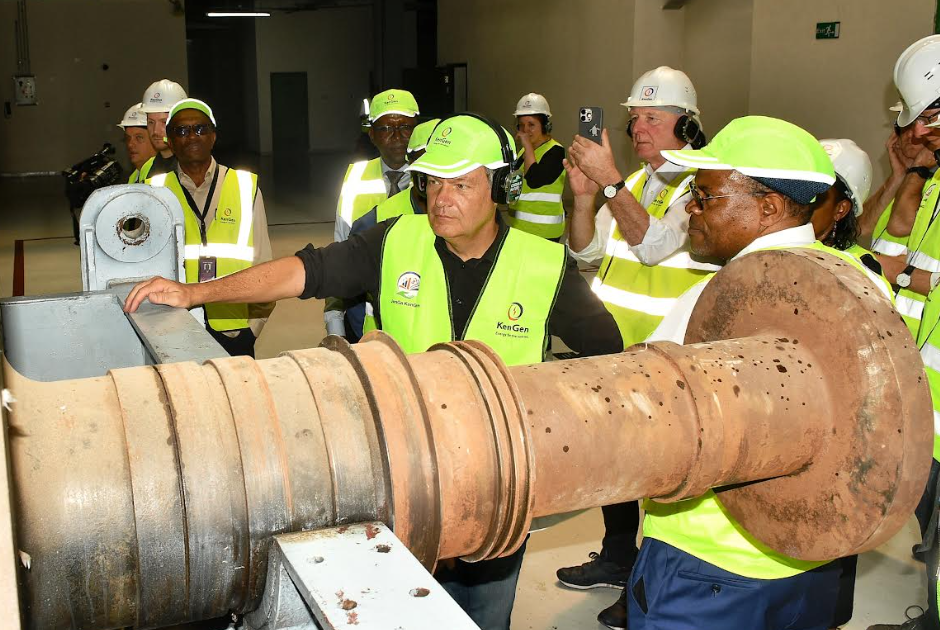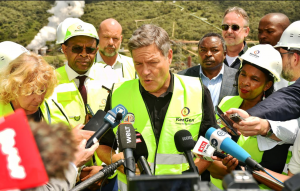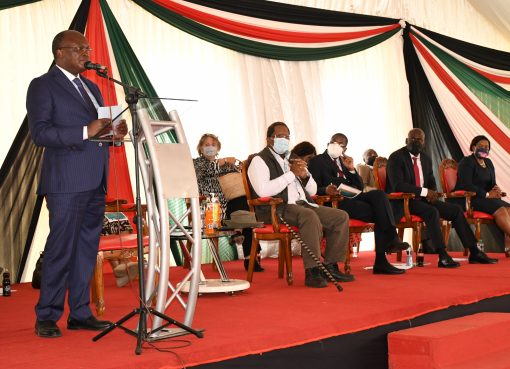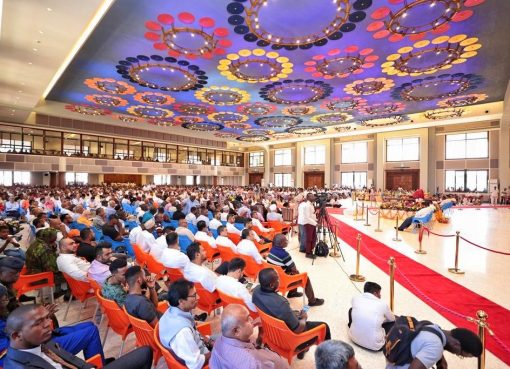Germany’ Vice Chancellor and Federal Minister for Economic Affairs and Climate Action, Dr. Robert Habeck, has commended Kenya for its leadership and investments in renewable energy sources such as geothermal, solar, and wind.
The German Vice Chancellor is leading a German delegation of more than 800 members to the German Investment Forum, which is to be held in Nairobi this week to explore areas of investment and partnerships between the two countries.
So far, Germany, through the Germany Development Bank (KFW), has pumped more than Euros 248.1 million, equivalent to sh. 33.9 billion, into ongoing energy projects in the country.
Kenya is an important partner country of German development cooperation since 1963 as an important economic hub in Eastern Africa and a world leader on renewable energy.
Data from the Energy Ministry shows that in the past six decades, Germany has made a total of 2.5 billion Euros (Sh.342.7 billion) to Kenya, especially in the energy sector. During a round of government negotiations on development cooperation held in 2022, the German government committed another 153 million Euros (Sh. 20 billion) as part of new funding for the period 2022-2024.
It`s worth noting that Kenya is placed at number six globally in geothermal production, with the United States leading the pack with 3,900 megawatts (MW), followed by Indonesia and the Philippines at 2,418 MW and 1,952 MW, respectively. She leads Africa in geothermal exploration and production.
Kenya Electricity Generation Company (KenGen) Managing Director (MD) Engineer Peter Njenga, on his part, said the company has already launched its ambitious 10-year strategic plan (2024–2034) that seeks to add an additional 1,500 megawatts (MW) of electricity sourced from green sources to the country’s national grid in order to meet the growing demand for energy in the country, which he said is expected to grow exponentially in these 10 years.
The MD noted the production will include 840 MW from geothermal, 140 MW from hydro sources, and the rest from solar and wind in those 10 years.
He further assured of the company’s commitment to explore more geothermal energy, and already, there is an investor working on exploration at Menengai in Nakuru and will put an additional 300 MW to the national grid.
“This initiative is a testament to the Government’s commitment to achieving a 100 per cent transition to tapping electricity from green sources by the year 2030 and turning away from fossil sources,” the MD stated.
Engineer Njenga noted the company has also earmarked a 342-hectare parcel of land to establish a green park where investors will manage to tap 100 per cent of their power needs from geothermal power plants at a lower cost.
According to the company’s earlier reports, 14 companies have already shown investment interest in both light and medium enterprises where they will enjoy steady green energy away from recent power blackouts that have hit the country. Last year, Eco Cloud Company, in collaboration with Konza Technopolis, broke ground for their 1 billion dollar (Sh120 billion) green-powered data centre.
The company seeks to sell geothermal power at a rate of seven cents of a dollar per unit to companies establishing their investments and plans to fully operationalise the park by the year 2045.
KenGen has a total installed capacity of 1,786 MW sourced from green sources, including geothermal, hydro, wind, and solar, the greatest in Africa.
In addition, Njenga said KenGen is also supporting through their rich expertise in neighbouring countries of Tanzania, Ethiopia, Djibouti, and Eswatini in geothermal exploration. The MD further stated that the company is also tapping an extra 42,5 MW of electricity from its solar project at the hydro sources to complement each other in supplying power so that the solar will be providing energy by day to the country and hydro by night.
Representing Energy Cabinet Secretary (CS) James Opiyo Wandayi, Information, Information Communications Technology (ICT), and Digital Economy CS, Dr. Margaret Nyambura Ndung`u lauded the partnership between Kenya and Germany for the strides in tapping geothermal and other green energy sources of energy, which currently stand at 93 per cent of electricity consumed in the country.
Dr. Ndung`u noted that the noble investments have played a key role in helping the country reduce its carbon emissions footprint, which is crucial in mitigating the impacts of climate change, such as drought and floods.
Kenya currently produces a total of 1,100 MW of geothermal power, which includes 160 MW from a concessioner, and there is a further 450 MW waiting to be harnessed to the national grid.
The government has connected nine million Kenyans to the national electricity grid as of the end of 2022 compared to the two million in the year 2002, marking a huge step in the last mile connectivity project.
Geothermal resources in Kenya are located within the Rift Valley with an estimated potential of 1,000 gigawatts (GW) spread over 14 prospective sites on the floor of the Rift Valley.
According to data from the Ministry of Energy, Kenya’s current effective installed (grid-connected) electricity capacity is about MW. Electricity supply is predominantly sourced from hydro and fossil fuel (thermal) sources. This generation energy mix comprises hydro at 838 MW, geothermal at 1,100 MW, two per cent from biogas co-generation, wind at 437 MW, and solar at 173 MW.
By Mabel Keya Shikuku and Erastus Gichohi






